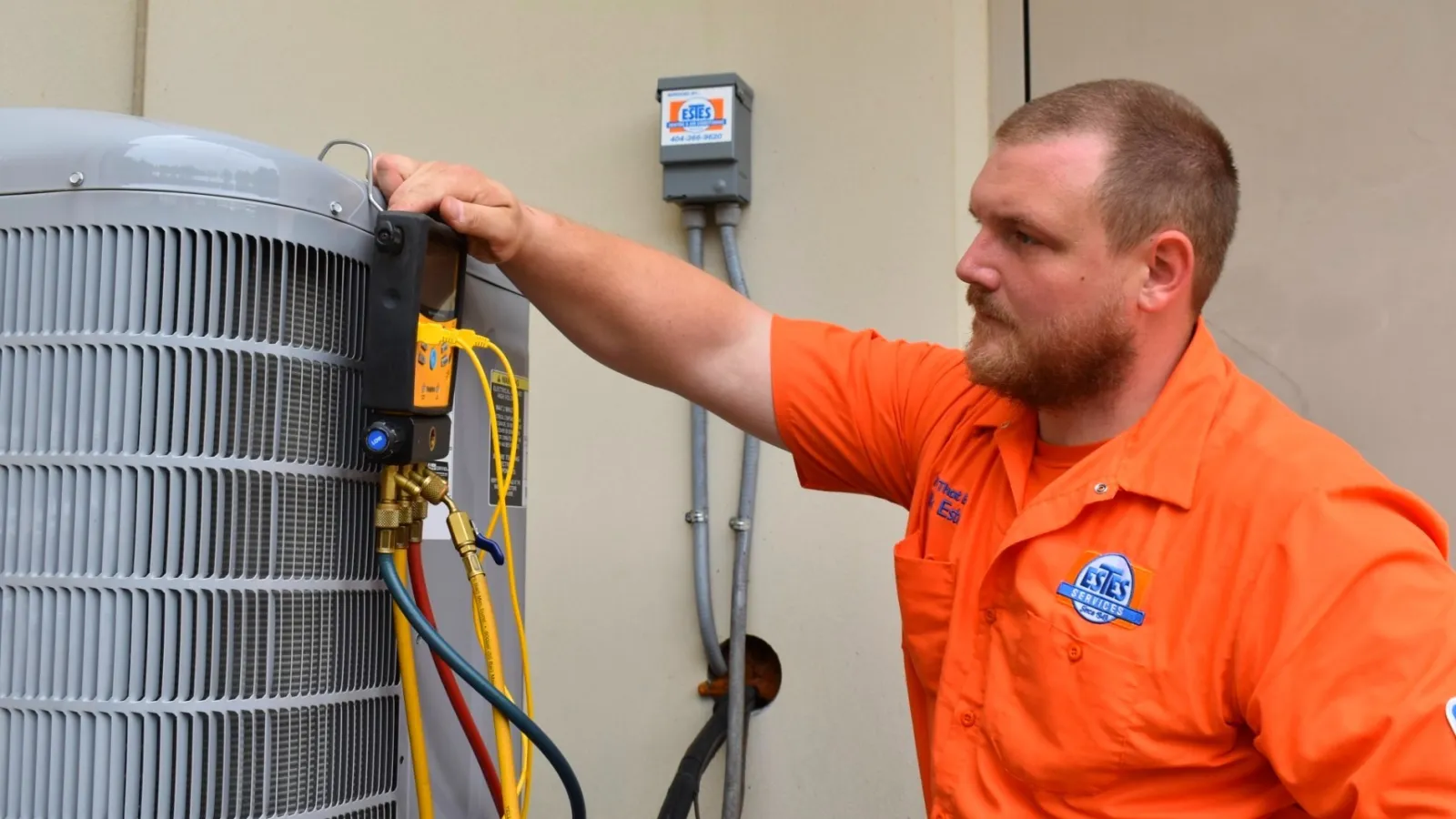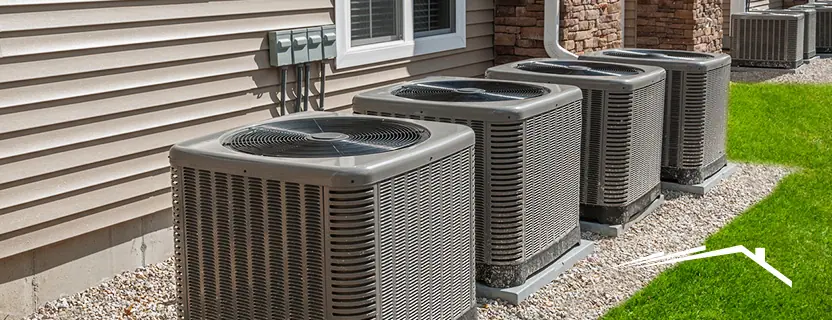What Makes a Successful heat pump installation ooltewah tn
What Makes a Successful heat pump installation ooltewah tn
Blog Article
How a Warm Pump and Heating System Job Together to Optimize Your Home's Home heating Performance
Recognizing just how a heatpump and furnace interact is important for home owners looking for reliable home heating remedies. Each system has its strengths, offering a balanced method to home comfort. The warm pump masters moderate temperatures, while the heater supplies quick warmth during severe cold. This harmony not just minimizes power prices yet additionally enhances the life expectancy of both home appliances. What elements influence this partnership, and just how can home owners optimize their advantages?
Understanding Warmth Pumps: How They Work
Many individuals might be unknown with their inner operations, warmth pumps play a necessary duty in contemporary heating systems. These tools run by moving warm from one place to an additional, using the principles of thermodynamics. In chillier months, a heatpump essences warmth from the outside air, ground, or water, and transfers it indoors to heat the space. Alternatively, during warmer months, it can turn around the process, serving as an ac system by eliminating warm from inside to the outside.Heat pumps are composed of an evaporator, compressor, condenser, and development shutoff. The refrigerant within the system takes in warmth as it evaporates at reduced temperature levels and pressures. The compressor after that boosts the pressure and temperature of the cooling agent, allowing it to release heat as it condenses. This effective procedure can significantly minimize energy intake contrasted to typical heating methods, making heatpump a sustainable selection for climate control in homes.
The Function of Heating Systems in Home Heating
Furnaces play a crucial role in home heating by supplying a reputable resource of warmth during the chillier months. They run by creating warm via burning or electric resistance, distributing it throughout the home by means of air ducts or radiant systems. The performance of a heater is frequently measured by its Annual Gas Application Efficiency (AFUE) score, which suggests just how efficiently the unit converts fuel right into heat.Furnaces can make use of numerous energy sources, including gas, oil, electrical power, or lp, enabling property owners to choose one of the most ideal alternative for their requirements. Unlike heatpump, which might struggle in extreme chilly, furnaces preserve consistent efficiency, guaranteeing that interior temperatures stay comfortable no matter of outside problems. In addition, modern furnaces commonly come furnished with sophisticated technology, such as variable-speed blowers and clever thermostats, boosting their performance and responsiveness. This convenience makes heaters a crucial element in comprehensive home heating methods.

Advantages of Utilizing Both Equipments Together
Incorporating the strengths of both heaters and warmth pumps can bring about a more efficient and reliable home heating remedy. Utilizing both systems allows property owners to make use of the heat pump's power efficiency throughout milder temperatures while relying upon the heater for more severe cold conditions. This dual method can significantly decrease energy expenses, as heatpump take in much less power than typical heating methods when temperatures are moderate.Additionally, using both systems together can improve convenience levels in the home. Heatpump can give constant, even home heating, while furnaces can promptly increase ambient temperature levels when needed. Furthermore, the integration of both systems can extend the life-span of equipment by lowering wear and tear on each device, as they share the workload. Eventually, homeowners can take pleasure in a balanced, cost-efficient home heating option that readjusts perfectly to differing weather condition conditions, making sure a cozy and inviting home throughout the winter season.
How Warmth Pumps and Furnaces Enhance Each Other
When homeowners integrate heatpump and furnaces, they develop a complementary furnace that makes best use of efficiency and convenience. Warmth pumps run by transferring heat from the outdoors air or ground, making them highly effective in modest climates. They excel during milder temperature levels, offering cost-efficient home heating. Alternatively, furnaces generate warm with burning or electric resistance, supplying strong, immediate warmth during severe cool conditions.The mix of these two systems enables vibrant modifications based upon temperature variations. Throughout warmer months or milder wintertime days, the heatpump can take the lead, preserving energy and decreasing prices. As temperature levels decline, the heating system can flawlessly engage, making certain consistent warmth throughout the home. This synergy not just enhances power use however also improves the life expectancy of both systems, as each unit runs within its ideal efficiency range. Together, they develop a well balanced environment that adapts to varying climate needs.
Enhancing Performance: Tips for Homeowners
Homeowners can boost their heating efficiency via numerous functional methods. Establishing a normal upkeep schedule, integrating clever thermostat technology, and executing reliable insulation and sealing solutions are essential steps. These steps not just enhance comfort yet likewise reduce energy prices.
Normal Maintenance Arrange
To assure maximum home heating effectiveness, developing a normal maintenance timetable is crucial for any home. Property owners should prioritize regular evaluations of both heat pumps and furnaces to establish peak efficiency. This includes changing air filters each to 3 months, as blocked filters can considerably reduce effectiveness. In addition, scheduling expert maintenance at the very least yearly permits professionals to determine and resolve potential issues before they intensify. Homeowners need to also clean the heat pump's exterior device to avoid debris accumulation that can hinder airflow. By adhering to a regular maintenance routine, homeowners not only improve their home heating systems' performance yet likewise prolong their lifespan, bring about greater comfort and lowered energy expenses throughout the chillier months.
Smart Thermostat Assimilation
Incorporating a clever thermostat right into a home heater can substantially boost energy performance, specifically as it permits accurate control over temperature level setups. These devices can learn the property owner's routine and preferences, instantly adjusting the temperature level to maximize comfort while lessening energy usage. For instance, they can lower home heating throughout times when the home is unoccupied, website link lowering unnecessary consumption. Numerous clever thermostats also supply real-time energy usage information, allowing property owners to make informed decisions concerning their heating behaviors. Furthermore, remote gain access to through smart device applications permits individuals to readjust setups from anywhere, guaranteeing the home is warm upon return. Overall, wise thermostat assimilation not only boosts convenience but significantly contributes to energy cost savings and effectiveness.
Insulation and Securing Solutions
Smart thermostats play a critical duty in power effectiveness, however their efficiency can be greatly improved by correct insulation and securing options. House owners should prioritize shielding attics, floorings, and wall surfaces to minimize heat loss. Premium insulation materials, such as spray foam or fiberglass, can considerably boost thermal resistance. Additionally, securing gaps around windows, ducts, and doors prevents cold air infiltration and warm getaway. Weatherstripping and caulking work approaches for resolving these leaks - heat pump replacement ooltewah tn. Normal examinations for air leaks, together with making use of blower door examinations, can assist recognize trouble locations. By buying insulation and securing, house owners can maximize the efficiency of their heater, inevitably bring about lowered power intake and reduced utility bills
Common Misconceptions Regarding Warm Pumps and Furnaces
What mistaken beliefs surround heat pumps and furnaces? Many people erroneously think that heatpump are inefficient in colder environments. In fact, modern heatpump are made to operate efficiently even in reduced temperature levels, supplying trusted home heating throughout winter. An additional typical myth is that heaters are always extra reliable than heatpump. This depends on the specific energy resources and performance ratings of the units in inquiry. Some might additionally believe that using both systems all at once is unnecessary, however in truth, this combination can enhance heating efficiency, specifically during severe weather. Additionally, individuals commonly assume that heatpump call for constant maintenance, when in reality, they have similar upkeep needs to standard heater. By exposing these misconceptions, house owners can make even more informed choices regarding their home heating alternatives, ultimately bring about improved comfort and power efficiency in their homes.
Maintenance Considerations for Combined Equipments

Often Asked Inquiries
Can Heat Pumps Work Efficiently in Very Cold Climates?
Warm pumps can battle in extremely chilly climates due to minimized performance and heat extraction limitations. Developments in technology have actually led to versions made for far better efficiency in such problems, enhancing their practicality in extreme settings.
How Much Time Do Warmth Pumps and Furnaces Generally Last?
Warm pumps commonly last 15 to two decades, while furnaces have a lifespan of 15 to 30 years. Regular upkeep can expand their long life, guaranteeing efficient operation and minimizing the demand for early substitutes.

What Is the Average Cost of Putting Up Both Equipments?
The ordinary cost of installing both a warmth pump and a heater generally ranges between $5,000 to $10,000 - ductless mini splits. Aspects affecting this expense consist of system size, installation intricacy, and local labor rates
Exist Tax Obligation Incentives for Using Energy-Efficient Home Heating Systems?
Lots of property owners make go to my blog inquiries about tax obligation incentives for energy-efficient heating systems. Different government and state programs typically supply refunds or credit ratings, encouraging the fostering of lasting modern technologies to decrease energy consumption and advertise ecological duty.
How Do I Choose the Right Size Heatpump and Heater?
Choosing the right size warm pump and heater entails computing the home's square video footage, considering insulation top quality, and assessing regional environment. Consulting a specialist can assure suitable system performance web and energy effectiveness based upon certain demands. furnace replacement. Understanding how a warmth pump and heater work together is vital for house owners seeking effective heating services. In colder months, a heat pump extracts heat from the outside air, ground, or water, and transfers it inside your home to heat the living area. When house owners integrate heat pumps and furnaces, they develop a complementary heating system that maximizes performance and convenience. Heat pumps operate by transferring heat from the outdoors air or ground, making them extremely effective in modest climates. Warmth pumps can struggle in very cold climates due to decreased efficiency and heat extraction constraints
Report this page